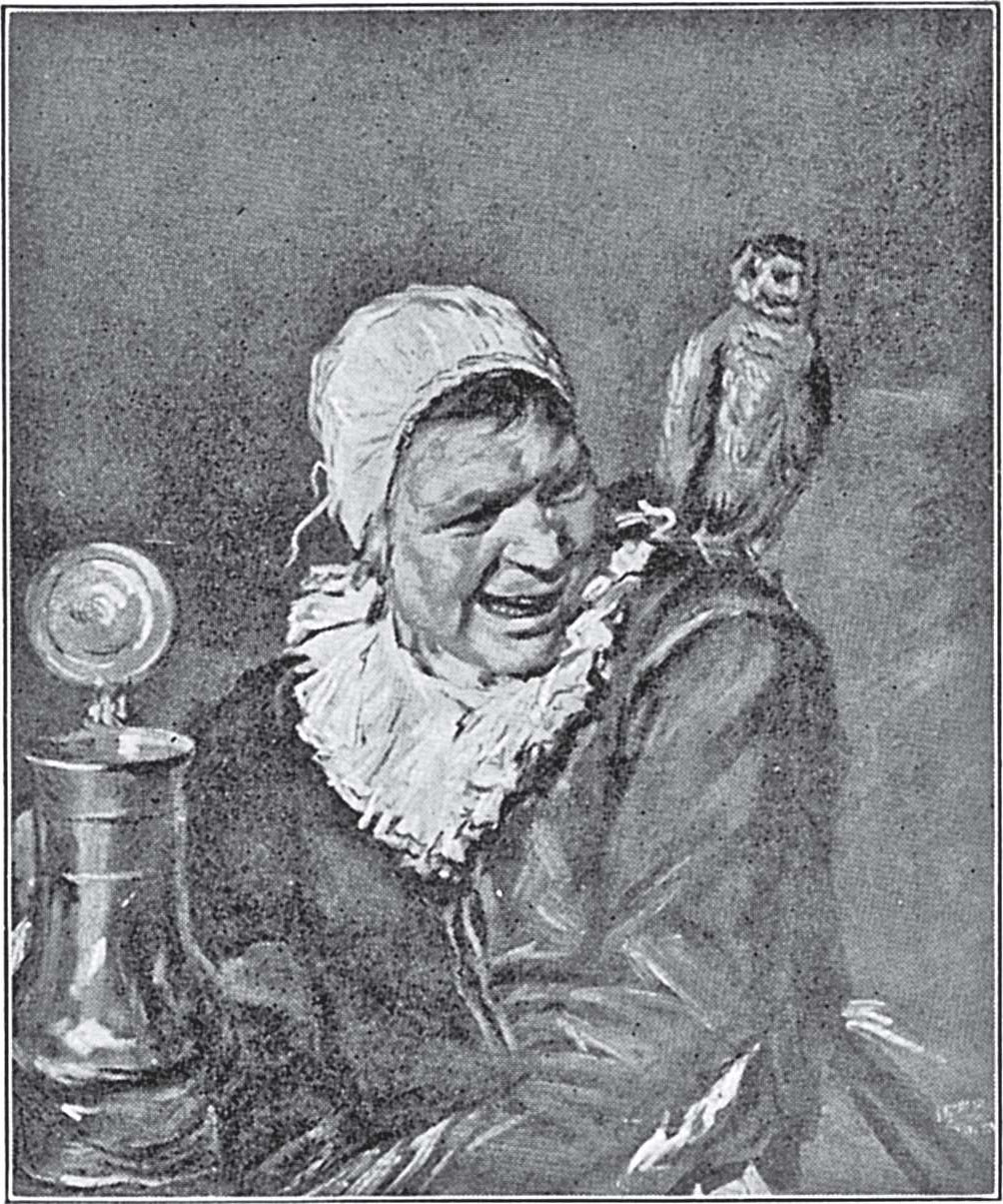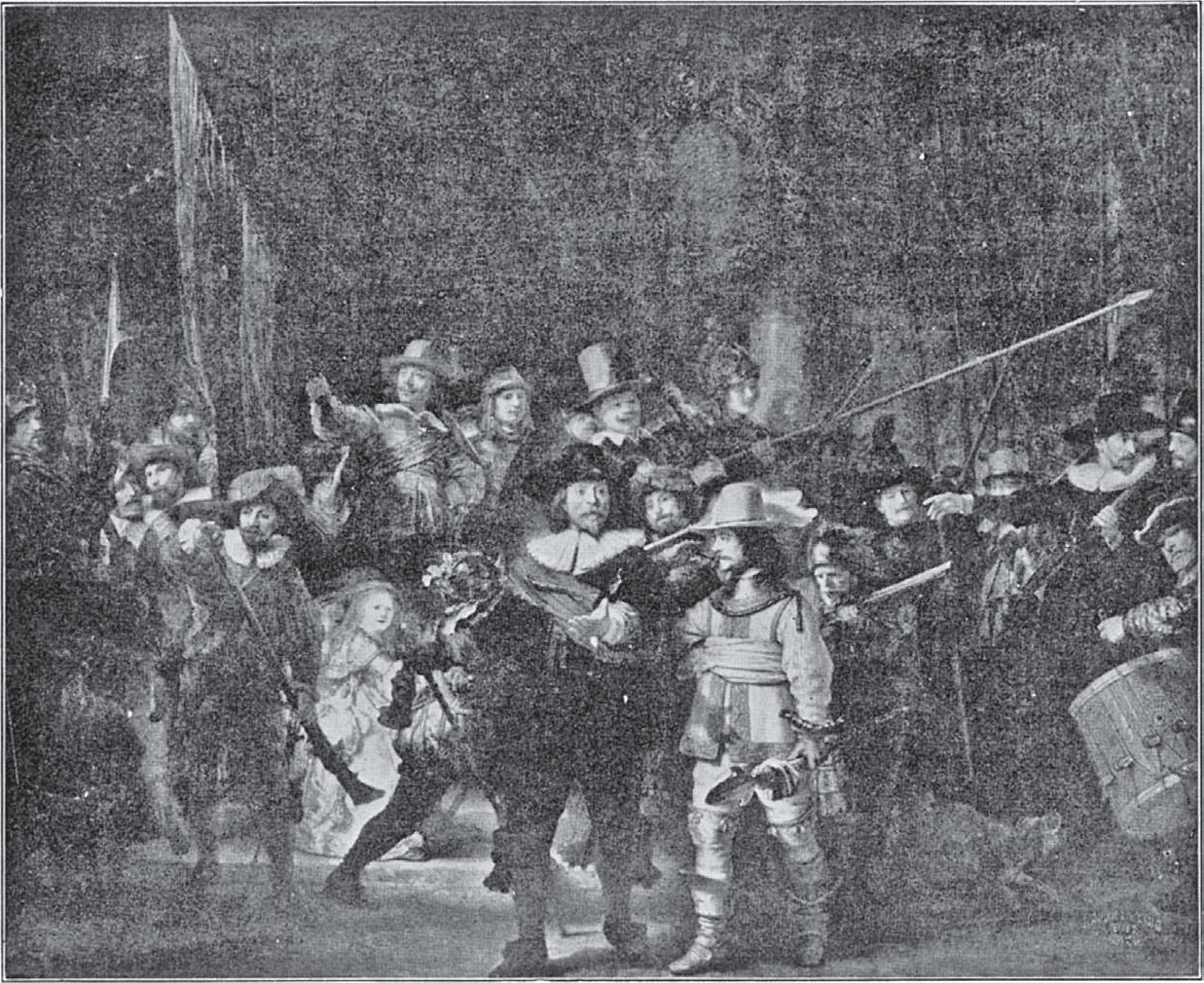





N EXT door to Flanders on the shore of the North Sea is the country called the Netherlands — the country of wooden shoes and windmills, of tulips and hyacinths, of the Zuider Zee, of canals and dikes. Often people speak of the Netherlands as Holland, but that is not quite correct because Holland is just a part of the country. The people of the Netherlands we generally call Dutch.
The Dutch, like the Italians and the Flemish, had a Renaissance too. The Dutch Born Again time was later in coming than the Italian and the Flemish, but when it did come it produced some of the very best artists of the world.
The Dutch artists painted pictures that were different from those of the Italians and the Flemish. The Dutch religion had become a Protestant religion instead of Roman Catholic,and the Dutch did not believe in decorating their churches as much as the Catholics did. And so the Dutch artists painted very few religious pictures, few Madonnas and Holy Families. Instead they painted portraits and landscapes and pictures of the everyday people and things they saw around them.
Their pictures differed in other ways too. In the older paintings, in Italy and Flanders, for instance, most of the people in the pictures had the natural expression on their faces that they usually wore. You can think of one of these artists saying to some one who was having his portrait painted,“Now just sit still and don’t move, and I’ll paint your portrait.”But some of the Dutch artists had a different idea of portrait painting. A Dutchman named Frans Hals painted portraits of people who you know were not told to sit still and look natural. The expression on the faces of Frans Hals’s portraits is what we call a fleeting expression. He caught a smile, or a grin,or a scowl — expressions that last only a second or two — and he made his pictures look as though in another second the expression would change.
Some pictures by Frans Hals were different in still another way. They showed the strokes of the paint brush not smoothed out, but left in the paint, as if the artist wanted you to see that he had painted the portrait quickly and caught the fleeting expression on the face with a few quick strokes of his brush.Not all his pictures are like this. Some are just as smoothly and carefully finished as can be. A portrait called “The Laughing Cavalier” is one of his most famous pictures and it shows the lace on the man’s cuffs done very carefully — and lace is not an easy material to paint in a picture. “The Laughing Cavalier”really isn’t laughing. He seems to have a self-satisfied smile,instead of a laugh, on his lips.
Another picture by Hals will show you the quick brushstroke work that he could do so well. It is called “Hille Bobbe” and shows a woman and her parrot. The parrot looks a good deal like an owl and the old woman isn’t a bit pleasant-looking. Sometimes the picture is even called “The Witch of Haarlem.” Haarlem was the Dutch city where Hals lived.
Now, at the time Frans Hals lived and painted, the Netherlands had recently become a free and independent country. To make sure that they would be strong enough to keep this freedom from other countries the Dutch had bands of citizens who were trained to act as companies of soldiers in case of need. Gunpowder and guns were still so new that some of these companies still called themselves archers or crossbowmen. The officers of each company generally had their portraits painted all in one picture and Hals painted several group portraits of the archers and other companies.He is generally spoken of as the greatest of all Dutch portrait painters except Rembrandt.

NO.17-1 HILLE

This master, Rembrandt, did most of his work in the city of Amsterdam. He did not do portraits only. He painted almost every kind of subject an artist could paint. Rembrandt created a light in his pictures that was unlike real daylight or lamplight but which makes his pictures marvels of brilliant light and deepest shadow. For years he worked hard, lived happily, and earned money and fame. But he spent so much money in collecting beautiful things he liked that he finally owed more than he could pay. His pictures became unpopular, too, and so he found it hard to make money in his old age.
You wouldn’t think, would you, that a picture that is now considered one of the great pictures of the world would be laughed at and disliked, and would make the painter unpopular when it was painted? But that is what happened when Rembrandt painted his “Night Watch.” “The Night Watch” was ordered by one of the companies of men who acted as guards for the city in time of danger. It was to hang in their club house and each member of the guard was to pay his share for having the picture painted.
Rembrandt wanted to show the stir and excitement as the guards marched out, and he painted the picture with the captain and his lieutenant in the front and the members of the guard hurrying out behind them with guns and spears.Children are there to watch the show, and even a dog appears in the picture. The light is very bright on some of the figures and the rest are in the darkness of night. And yet the light is so different from ordinary light that some think the picture is a daytime scene and should not be called “The Night Watch.”

NO.17-2 THE NIGHT

Now, when the members of the guard saw the picture,they did not like it.
“We paid to have our portraits painted,” they said, “and here the artist has stuck us in the background where it is so dark we can hardly even be recognized.”
Other Dutchmen laughed at the picture. “We can’t tell whether it represents night or day,” they said. And from that time on Rembrandt sold fewer and fewer pictures.
Wouldn’t you like me to show you a list starting with the very best artist in the whole world and then giving the second best and then the third, and so on down to the twentieth or fiftieth or hundredth best artist? Well, I’m not going to show you any such list, not because I don’t want to, but because no one in the world can make such a list. If I did, it would be only my private opinion. It wouldn’t be the best artist and the next best and so on, but the artist I think is best and the one I think is next best. And just because I think he’s best doesn’t mean he is best. No one artist is so much greater than all other artists that every one can say, “He is undoubtedly the best.”
But if all the men who know most about such things made their own private lists of the best, I’m pretty sure all the lists would have Rembrandt somewhere near the top.
So remember how great an artist people think Rembrandt was and if you ever in your whole life get a chance to see one of his real pictures — not just a copy in a book — be sure to look at it long and thoughtfully. Then see where he would come on your list of great artists.